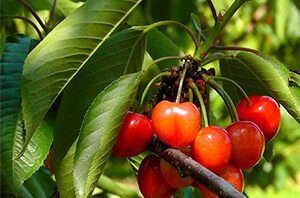The start of the school year is filled with so many (exciting!) rituals. New pencils, notebooks and erasers — maybe even a cool new backpack. The grinning first-day-of-school photo op on the front porch. And…figuring out what to pack for lunch.
The start of the school year is filled with so many (exciting!) rituals. New pencils, notebooks and erasers — maybe even a cool new backpack. The grinning first-day-of-school photo op on the front porch. And…figuring out what to pack for lunch.
In our house, we have just a few more years of packing lunches, and my highschooler now often packs his own. But we’re always looking for creative new ideas — and the Twittersphere has been buzzing for weeks with fun, healthy lunch ideas. Here’s another resource that lunch-packing parents might want check out: WhatsOnMyFood.org.
This easy online tool shows which pesticides government sampling has found on what foods, and what health impacts these chemicals can have. It’s sobering stuff but, as a mom, I’d rather know than not know.
Informed choices, common sense
Here’s how I use WhatsOnMyFood.org. For those foods we eat most often, I check to see how many pesticides are found, and what harms they’re linked to — then make an informed choice.
My daughter, for example, loves fresh spinach with a passion (really!). USDA samplers found 54 different pesticides on spinach; 21 of them can disrupt the hormone system, and 11 are known neurotoxicants. Organic spinach has been at the top of my shopping list for years. Other priority organic purchases in our house include strawberries, blueberries and cherries.
PAN’s team updated the tool with the latest USDA data just a few months ago, including new results from baby food sampling. Common sense tells you pesticides in baby food has to be a bad idea — and more and more science is proving that even at the low levels usually found on food, pesticides are indeed especially bad for children’s developing minds and bodies.
One more reason to know what’s on your food just bubbled up in a study released yesterday. It turns out certain antiobiotic pesticides — used to control the growth of bacteria and fungi on fruit — can cause severe allergic reactions.
And finally, WhatsOnMyFood.org is also a great way into conversations about the bigger story of why we need to create a safer, healthier food system. Check out this petition on the site, urging President Obama to take some real steps to make it happen.








